#antoine ertaskiran
Text
Janet Werner - Spiders and Snakes / Galerie Bradley Ertaskiran (ca)
Janet Werner / Feathers and fold
Spiders and Snakes
Jusqu’au 4 mai 2024
Bradley Ertaskiran a le plaisir de présenter Spiders and Snakes, une exposition solo de nouvelles peintures de Janet Werner. Ce corpus d’œuvres poursuit les explorations uniques et hybrides de l’artiste dans le genre du portrait, dans lesquelles elle crée ses propres règles en réunissant des représentations concurrentes de…
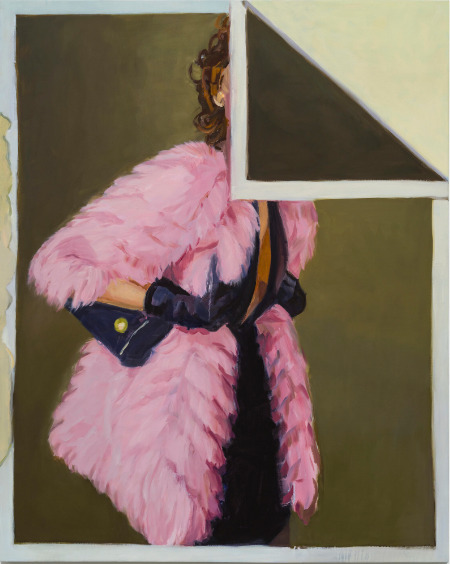
View On WordPress
#3550 rue Saint-Antoine Ouest#Association des galeries d&039;art contemporain (AGAC)#Galerie Bradley Ertaskiran#Janet Werner#Janet Werner - Spiders and Snakes / Galerie Bradley Ertaskiran (ca)#Montréal (Québec)#Paumé arts et littératures#Plural Foire d&039;art contemporain - Plural Contemporary Art Fair / Grand Quai du Port de Montréal (CA)#Spiders and Snakes
0 notes
Photo
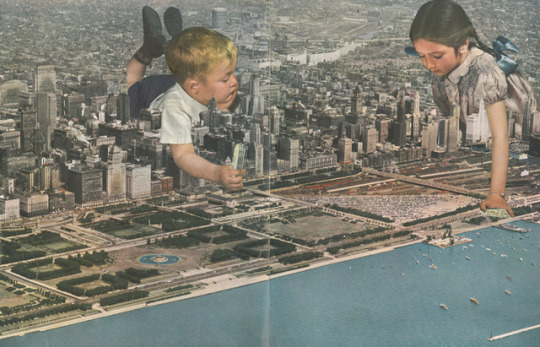
Kolaj Magazine is the world’s only internationally-oriented art magazine dedicated to contemporary collage. Subscribe, order a copy, or collect back issues HERE
THIS WEEK AT KOLAJ MAGAZINE
All About Canada
COLLAGE ON VIEW
Temporary Tunnels: Russell Leng at FIELD Contemporary in Vancouver, British Columbia
FROM THE ARTIST DIRECTORY
Gart Darley, Toronto, Ontario (image)
COLLAGE ARTIST TRADING CARD SPOTLIGHT
Yogi, Artist, Prairie Kid: Julie Henneberg
FROM KOLAJ #21
The Golden Age of Collage
COLLAGE ON VIEW
Now, as Before: Martin Golland at Galerie Antoine Ertaskiran in Montreal
READ THE FULL UPDATE
Are you getting Kolaj Magazine delivered to your door? Subscribe Today!
U.S. & International Subscribers go HERE | Canadian Subscribers go HERE
#collage#collageart#collageartist#Toronto Art#Toronto Artist#vancouver#vancouverartgallery#vancouverartist#vancouverart#montreal#Montreal Art#montreal artist#canada#canadianart#canadianartist#montrealart#montrealartist#visual art#contemporaryart#cutandpaste#papercollage#collagekunst#analogcollage#collagecollective#artmagazine#handmadecollage#collagist#collagista#art#artist
14 notes
·
View notes
Photo
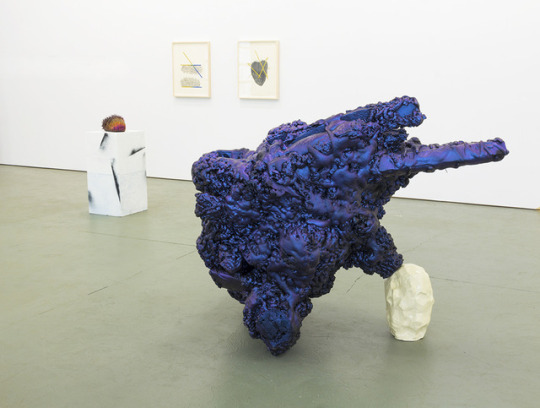
Philippe Caron Lefebvre, back in 2014 at Galerie Antoine Ertaskiran in Montreal
8 notes
·
View notes
Photo

New Post has been published on https://toldnews.com/travel/art-review-at-frieze-new-york-islands-of-daring/
Art Review: At Frieze New York, Islands of Daring

Getting into this year’s Frieze Art Fair on Randalls Island will cost you $57, plus the round trip on the ferry. But that’s nothing compared to what it cost nearly 200 galleries to exhibit there. And so dealers have made the reasonable decision to bring a little of everything that sells — which may account for the conservative vibe. That said, there are many islands of daring, including special sections focused on solo presentations, small galleries, the influential gallery JAM and virtual reality. We sampled them all — along with the mainland fairs that are part of Frieze Week. Our art critics Martha Schwendener and Will Heinrich pick a handful of the best booths under Frieze New York’s big tent.
Booth C2
Bridget Donahue and LC Queisser
One of the strongest single-artist booths is a joint presentation by Bridget Donahue Gallery and LC Queisser, who represent the artist Lisa Alvarado in New York and the Republic of Georgia, respectively. Ms. Alvarado made her acrylic-on-canvas pieces, each painted with a thrilling zigzag pattern, as backdrops for performances by the Natural Information Society, in which she plays the harmonium. If the fair’s not too loud, you’ll be able to hear the band’s hypnotic music, too. WILL HEINRICH
Two exceptional but very different displays are on view in the fair’s midsection. At Casey Kaplan gallery, Matthew Ronay’s carved wooden sculptures, pieced together into abstract, evocative organic configurations in various coral hues, are placed on plinths and feel like an oasis amid the fair’s chaos. (Mr. Ronay also has an exhibition on view at Kaplan’s Chelsea location.) Martine Gutierrez continues her rampage as the Indigenous Woman, a transgender alternative-fashionista at Ryan Lee. In photographs and faux-fashion spreads, Ms. Gutierrez combines traditional Mayan and Guatemalan garments and fabrics with fantastic and futuristic accessories and makeup to conjure new, fluid forms of being. MARTHA SCHWENDENER
Booths F6, F12 and F14
Company, Bank and Very Small Fires
The Frame section of Frieze, devoted to galleries 10 years or younger, is particularly good this year. Befitting the ethos of the emerging artists they represent, the booths are platforms for performance or installations, with linoleum or AstroTurf covering the floors. The New York gallery Company is hung with paintings by Jonathan Lyndon Chase that feature roughly drawn figures or graffiti, as well as crude sculptures of a toilet seat or a dollar sign. Yanyan Huang treats the booth at Bank, a Shanghai gallery, as an “immersive portal” (according to a handout) in which traditional ink drawings merge with digital applications. Nearby, Diedrick Brackens’s colorful tapestries at the Los Angeles gallery Various Small Fires join traditional materials with references to figures like African-American cowboys. SCHWENDENER
The Tehran gallery Dastan (appearing here as Dastan’s Basement) has hung more than 50 portraits by the artist and architect Bijan Saffari. A member of the royal family who left Iran for Paris after his country’s 1979 revolution, Mr. Saffari was also gay, which made his position doubly precarious. The portraits are rather simple and conservative, drawn in graphite and colored pencil. And yet they are sensitive and closely observed, and they gain by their group presentation, appearing like a narrative of his circle of friends in the ’70s and ’80s. There is an elegiac tone to these drawings; the artist died days before the current edition of Frieze opened. SCHWENDENER
Booths B36 and F9
David Lewis and Antoine Ertaskiran
In a fair dominated by painting, David Lewis of the Lower East Side and Montreal’s Galerie Antoine Ertaskiran, making its Frieze debut, stand out with presentations that could pass for gallery shows. Four cool acrylics by New York painter Charles Mayton, at Lewis, feature schematic eyes and hands in jazzy mash-ups of shelves, bars and circles. Jane Corrigan’s large wet-on-wet paintings of women on the go, at Ertaskiran, are exquisite brown and yellow collisions of impatience and poise. HEINRICH
Booths A11, B32, C7 and D1
Foxy Production, Simone Subal, Rachel Uffner and Galerie Lelong
Several New York galleries have mounted outstanding painting displays in which artists bend the medium in a variety of ways. At Foxy Production, Srijon Chowdhury, Gina Beavers and Sascha Braunig offer reinventions of Gothic romanticism, surrealism, Op or Pop Art. Simone Subal is showing the work of Emily Mae Smith, whose paintings are slick and whip-smart updates and appropriations of posters from the ’70s and ’80s. Maryam Hoseini works both on and off the wall at Rachel Uffner, but combines abstracted Persian imagery or techniques with contemporary painting. Sarah Cain’s take on painting at Galerie Lelong offers candy colors, cutouts and a floor flooded and stained with pigment. They remind you of paintings’ origins — in childhood — and suggest a kind of joyful, delirious regression. SCHWENDENER
Booths S4, S10 and S11
Galerist, Galeri Nev and Pi Artworks
The fair’s outstanding Spotlight section, curated by Laura Hoptman of the Drawing Center, is dedicated to “significant work by overlooked figures.” They include Yüksel Arslan, a Turkish painter born in 1933 who moved to Paris at the invitation of André Breton and died in 2017. His “Arture 439, Sans Titre, l’Homme,” from 1992, in a joint presentation by Turkish galleries Galerist and Galeri Nev, is a gloriously strange gallimaufry of interspecies sex acts and quotations from the artist’s scientific reading, drawn with homemade colors. Susan Hefuna makes ink drawings inspired by the intricate wooden screens of her Cairo childhood. The examples presented by Pi Artworks of London and Istanbul are done on overlapping sheets of tracing paper fastened with rice glue. The multitude of tones and textures create a fascinating tension between clarity and ambiguity — the drawings are like letters of a foreign language glimpsed in a dream. HEINRICH
The Diálogos section of Frieze includes solo presentations of Latin American art, organized by Patrick Charpenel and Susanna V. Temkin of New York’s El Museo del Barrio. I was particularly taken with Mariela Scafati’s hybrids of paintings and sculpture at the Buenos Aires gallery Isla Flotante. Ms. Scafati takes wooden bars where canvas is stretched and treats them like bones, joining the parts together in puppetlike configurations, sometimes bound or “wearing” a jacket or a pair of pants. SCHWENDENER
Booths B9, B10 and B20
lokal_30, Koenig & Clinton and Kate Werble
A vibrant knot of color and form awaits you at the intersection of New York’s Koenig & Clinton and Kate Werble galleries and Warsaw’s lokal_30. From Poland come three painters exemplifying postwar and contemporary Surrealism, among them the young Ewa Juszkiewicz, who repaints classic portraits of women, but hides their faces with cloth, ears of corn or a backward French braid. They evoke feminism, dream logic and implicit violence. Tony Marsh’s over-the-top ceramic vessels, encrusted in what look like shards of glaze, meet the eye-bending optical paintings of Anoka Faruqee & David Driscoll at Koenig & Clinton. Marilyn Lerner makes delicately complicated oil-on-wood abstractions at Kate Werble; don’t miss the unlabeled low tables by Christopher Chiappa, also in Werble’s booth. HEINRICH
There’s something magical about William T. Williams’s early 1970s “Diamond in a Box” paintings, hard-edged geometric patterns in blazing colors. The subtle misdirection of those patterns, and the complicated rhythm of the colors, mean you could look at them forever. Michael Rosenfeld presents a dozen never-before-shown acrylic-on-paper works from the same period. In these, a wiggly meander snakes in and out of concentric circles filled with vibrant brush strokes — they’re like Bauhaus takes on the Aztec calendar. HEINRICH
Booth F18
PM8
Spanish gallery PM8 presents 80 black-and-white photographs by the Lithuanian photographer Gintautas Trimakas, shot in the mid-90s and hung in three long rows. The piece shows 80 women with their heads and legs cropped out. Though the backgrounds range from white to nearly black, and the clothing and body types are all over the map, the typological presentation wears away these differences and leaves the figures all looking more or less interchangeable. It’s a deeply cynical take on both the consumerist Western freedoms available to Lithuanians after their 1990 independence and on the fate of all human bodies — the women aren’t so much living people as corpses in waiting. HEINRICH
V.I.P.s have access to the Deutsche Bank Wealth Management Lounge at Frieze New York. But nearly everyone can benefit from PPOW’s display of paintings by Steve Keene, which are on sale for $15 to $50. Mr. Keene was heavily influenced by indie rock bands in the early 1990s — his friends in Pavement, Silver Jews and the Dave Matthews Band — and the idea of selling quick, sketchily rendered paintings like cassette tapes. Using a stage in PPOW’s booth as a pop-up studio, he will produce hundreds of paintings on thin plywood panels — they are part endurance performance, part public art stunt. The vibe feels like one in a record store during an album release party. SCHWENDENER
Frieze New York
Through May 5 at Randalls Island Park; frieze.com. Tickets are limited and only available online.
#n i travel news#travel news a47#travel news leicester#travel news london#travel news m55#travel news uae
0 notes
Text
At Frieze New York, Islands of Daring
Getting into this year’s Frieze Art Fair on Randalls Island will cost you $57, plus the round trip on the ferry. But that’s nothing compared to what it cost nearly 200 galleries to exhibit there. And so dealers have made the reasonable decision to bring a little of everything that sells — which may account for the conservative vibe. That said, there are many islands of daring, including special sections focused on solo presentations, small galleries, the influential gallery JAM and virtual reality. We sampled them all — along with the mainland fairs that are part of Frieze Week. Our art critics Martha Schwendener and Will Heinrich pick a handful of the best booths under Frieze New York’s big tent.
Booth C2
Bridget Donahue and LC Queisser
One of the strongest single-artist booths is a joint presentation by Bridget Donahue Gallery and LC Queisser, who represent the artist Lisa Alvarado in New York and the Republic of Georgia, respectively. Ms. Alvarado made her acrylic-on-canvas pieces, each painted with a thrilling zigzag pattern, as backdrops for performances by the Natural Information Society, in which she plays the harmonium. If the fair’s not too loud, you’ll be able to hear the band’s hypnotic music, too. WILL HEINRICH
Two exceptional but very different displays are on view in the fair’s midsection. At Casey Kaplan gallery, Matthew Ronay’s carved wooden sculptures, pieced together into abstract, evocative organic configurations in various coral hues, are placed on plinths and feel like an oasis amid the fair’s chaos. (Mr. Ronay also has an exhibition on view at Kaplan’s Chelsea location.) Martine Gutierrez continues her rampage as the Indigenous Woman, a transgender alternative-fashionista at Ryan Lee. In photographs and faux-fashion spreads, Ms. Gutierrez combines traditional Mayan and Guatemalan garments and fabrics with fantastic and futuristic accessories and makeup to conjure new, fluid forms of being. MARTHA SCHWENDENER
Booths F6, F12 and F14
Company, Bank and Very Small Fires
The Frame section of Frieze, devoted to galleries 10 years or younger, is particularly good this year. Befitting the ethos of the emerging artists they represent, the booths are platforms for performance or installations, with linoleum or AstroTurf covering the floors. The New York gallery Company is hung with paintings by Jonathan Lyndon Chase that feature roughly drawn figures or graffiti, as well as crude sculptures of a toilet seat or a dollar sign. Yanyan Huang treats the booth at Bank, a Shanghai gallery, as an “immersive portal” (according to a handout) in which traditional ink drawings merge with digital applications. Nearby, Diedrick Brackens’s colorful tapestries at the Los Angeles gallery Various Small Fires join traditional materials with references to figures like African-American cowboys. SCHWENDENER
The Tehran gallery Dastan (appearing here as Dastan’s Basement) has hung more than 50 portraits by the artist and architect Bijan Saffari. A member of the royal family who left Iran for Paris after his country’s 1979 revolution, Mr. Saffari was also gay, which made his position doubly precarious. The portraits are rather simple and conservative, drawn in graphite and colored pencil. And yet they are sensitive and closely observed, and they gain by their group presentation, appearing like a narrative of his circle of friends in the ’70s and ’80s. There is an elegiac tone to these drawings; the artist died days before the current edition of Frieze opened. SCHWENDENER
Booths B36 and F9
David Lewis and Antoine Ertaskiran
In a fair dominated by painting, David Lewis of the Lower East Side and Montreal’s Galerie Antoine Ertaskiran, making its Frieze debut, stand out with presentations that could pass for gallery shows. Four cool acrylics by New York painter Charles Mayton, at Lewis, feature schematic eyes and hands in jazzy mash-ups of shelves, bars and circles. Jane Corrigan’s large wet-on-wet paintings of women on the go, at Ertaskiran, are exquisite brown and yellow collisions of impatience and poise. HEINRICH
Booths A11, B32, C7 and D1
Foxy Production, Simone Subal, Rachel Uffner and Galerie Lelong
Several New York galleries have mounted outstanding painting displays in which artists bend the medium in a variety of ways. At Foxy Production, Srijon Chowdhury, Gina Beavers and Sascha Braunig offer reinventions of Gothic romanticism, surrealism, Op or Pop Art. Simone Subal is showing the work of Emily Mae Smith, whose paintings are slick and whip-smart updates and appropriations of posters from the ’70s and ’80s. Maryam Hoseini works both on and off the wall at Rachel Uffner, but combines abstracted Persian imagery or techniques with contemporary painting. Sarah Cain’s take on painting at Galerie Lelong offers candy colors, cutouts and a floor flooded and stained with pigment. They remind you of paintings’ origins — in childhood — and suggest a kind of joyful, delirious regression. SCHWENDENER
Booths S4, S10 and S11
Galerist, Galeri Nev and Pi Artworks
The fair’s outstanding Spotlight section, curated by Laura Hoptman of the Drawing Center, is dedicated to “significant work by overlooked figures.” They include Yüksel Arslan, a Turkish painter born in 1933 who moved to Paris at the invitation of André Breton and died in 2017. His “Arture 439, Sans Titre, l’Homme,” from 1992, in a joint presentation by Turkish galleries Galerist and Galeri Nev, is a gloriously strange gallimaufry of interspecies sex acts and quotations from the artist’s scientific reading, drawn with homemade colors. Susan Hefuna makes ink drawings inspired by the intricate wooden screens of her Cairo childhood. The examples presented by Pi Artworks of London and Istanbul are done on overlapping sheets of tracing paper fastened with rice glue. The multitude of tones and textures create a fascinating tension between clarity and ambiguity — the drawings are like letters of a foreign language glimpsed in a dream. HEINRICH
The Diálogos section of Frieze includes solo presentations of Latin American art, organized by Patrick Charpenel and Susanna V. Temkin of New York’s El Museo del Barrio. I was particularly taken with Mariela Scafati’s hybrids of paintings and sculpture at the Buenos Aires gallery Isla Flotante. Ms. Scafati takes wooden bars where canvas is stretched and treats them like bones, joining the parts together in puppetlike configurations, sometimes bound or “wearing” a jacket or a pair of pants. SCHWENDENER
Booths B9, B10 and B20
lokal_30, Koenig & Clinton and Kate Werble
A vibrant knot of color and form awaits you at the intersection of New York’s Koenig & Clinton and Kate Werble galleries and Warsaw’s lokal_30. From Poland come three painters exemplifying postwar and contemporary Surrealism, among them the young Ewa Juszkiewicz, who repaints classic portraits of women, but hides their faces with cloth, ears of corn or a backward French braid. They evoke feminism, dream logic and implicit violence. Tony Marsh’s over-the-top ceramic vessels, encrusted in what look like shards of glaze, meet the eye-bending optical paintings of Anoka Faruqee & David Driscoll at Koenig & Clinton. Marilyn Lerner makes delicately complicated oil-on-wood abstractions at Kate Werble; don’t miss the unlabeled low tables by Christopher Chiappa, also in Werble’s booth. HEINRICH
There’s something magical about William T. Williams’s early 1970s “Diamond in a Box” paintings, hard-edged geometric patterns in blazing colors. The subtle misdirection of those patterns, and the complicated rhythm of the colors, mean you could look at them forever. Michael Rosenfeld presents a dozen never-before-shown acrylic-on-paper works from the same period. In these, a wiggly meander snakes in and out of concentric circles filled with vibrant brush strokes — they’re like Bauhaus takes on the Aztec calendar. HEINRICH
Booth F18
PM8
Spanish gallery PM8 presents 80 black-and-white photographs by the Lithuanian photographer Gintautas Trimakas, shot in the mid-90s and hung in three long rows. The piece shows 80 women with their heads and legs cropped out. Though the backgrounds range from white to nearly black, and the clothing and body types are all over the map, the typological presentation wears away these differences and leaves the figures all looking more or less interchangeable. It’s a deeply cynical take on both the consumerist Western freedoms available to Lithuanians after their 1990 independence and on the fate of all human bodies — the women aren’t so much living people as corpses in waiting. HEINRICH
V.I.P.s have access to the Deutsche Bank Wealth Management Lounge at Frieze New York. But nearly everyone can benefit from PPOW’s display of paintings by Steve Keene, which are on sale for $15 to $50. Mr. Keene was heavily influenced by indie rock bands in the early 1990s — his friends in Pavement, Silver Jews and the Dave Matthews Band — and the idea of selling quick, sketchily rendered paintings like cassette tapes. Using a stage in PPOW’s booth as a pop-up studio, he will produce hundreds of paintings on thin plywood panels — they are part endurance performance, part public art stunt. The vibe feels like one in a record store during an album release party. SCHWENDENER
Frieze New York
Through May 5 at Randalls Island Park; frieze.com. Tickets are limited and only available online.
Sahred From Source link Travel
from WordPress http://bit.ly/2GVjuBf
via IFTTT
0 notes
Photo
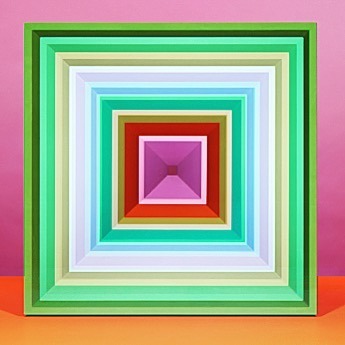
Jessica Eaton “Iterations” at Antoine Ertaskiran Gallery. #jessicaeaton #antoineertaskiran @galerieantoineertaskiran @jessicaeat #womanphotographer #multipleexposures #opticalillusion — view on Instagram https://ift.tt/2IhraxZ
0 notes
Photo
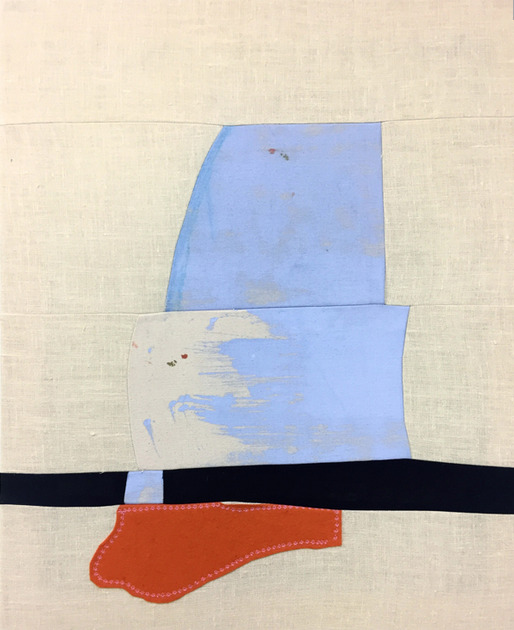
LES RAMSAY, YOU GO DISCO & I'LL GO MY WAY
at Galerie Antoine Ertaskiran
FEBRUARY 22 - MARCH 25 2017
OPENING: WEDNESDAY FEBRUARY 22, 5-8PM
Galerie Antoine Ertaskiran is delighted to present You Go Disco & I’ll Go My Way, by Vancouver based artist Les Ramsay. This exhibition focuses on a new body of work comprised of paintings, sculptures and embroideries. Continuing a practice that combines textiles with painting, Ramsay’s works are part of an aesthetics of domestic kitsch and folk art in which the boundary between a sincere nostalgia and an underlying irony is increasingly blurred. These new paintings and embroideries make up an assemblage of second-hand textiles, sometimes displaying traditional quilt motifs or bearing the artist’s brush strokes. The various fabrics, thus sewn by the artist to form a canvas, interweave in an emotion of care and abandonment.
The cross stiches and embroideries that intersperse the works function like tiny windows opening on familiar images in art history, from interior Flemish scenes to vast Canadian landscapes. Ramsay’s works reflect the manual labour associated with handicraft and are for the most part punctuated by female figures serenely carrying their tasks out. These scenes of women at work, surrounded by cats, show artificial environments that seem to question the very notion of comfort. Ramsay’s work repeats and deforms these mise-en-abymes all the while blurring the modernist traditions associated with the purity of the medium.
Drawing inspiration from the Cubists and Dadaists’ calling into question of perceptual and spatial certainties, Ramsay makes use of the materiality of everyday objects to explore the borders of contemporary painting. In creating unexpected compositions and relationships between household materials and painting, the artist generates different reading levels, which stimulate the viewer to entertain various evocative and personal metaphors.
Les Ramsay was born in Vancouver where he currently lives and works. He studied fine arts at Emily Carr University of Art + Design, at Universitat de Politecnica in Valencia (Spain) and completed his MFA at Concordia University in 2015. He has taken part in group and solo shows such as Border X, presented at Winnipeg Art Gallery (2016), Retreat of the Horstman at the Field Contemporary in Vancouver (2016), Ignition 10 at the Leonard and Bina Ellen Gallery Montréal (2014), Keep the Glove at Sunset Terrace in Vancouver (2014) or De-Accessioned Group Show at the Cooper Cole Gallery in Toronto (2012). He also has exhibited in Canada, Spain, Sweden, Switzerland, Germany as well as in the US. His works can be found in many private and corporate collections such as The Claridge Collection, Medcan and the TD Bank collection.
The artist would like to thank the Canada Council for the Arts for its financial support.
To consult the artist's profile, please click here.
0 notes
Text
Galerie Antoine Ertaskiran > Jeanie Riddle, Rough Diamonds, Gold Dust > 12 mars - 19 avril 2014

Jeanie Riddle : Rough Diamonds, Gold Dust, vue d'exposition,
galerie antoine ertaskiran 2014
#antoine ertaskiran#jeanie riddle#rough diamonds#gold dust#Volta#fiac#frieze new york#Mai Tabakian#gabriel dawe#ArtPrize#Artfair#Chiharu Shiota#Anne Ferrer
2 notes
·
View notes
Photo
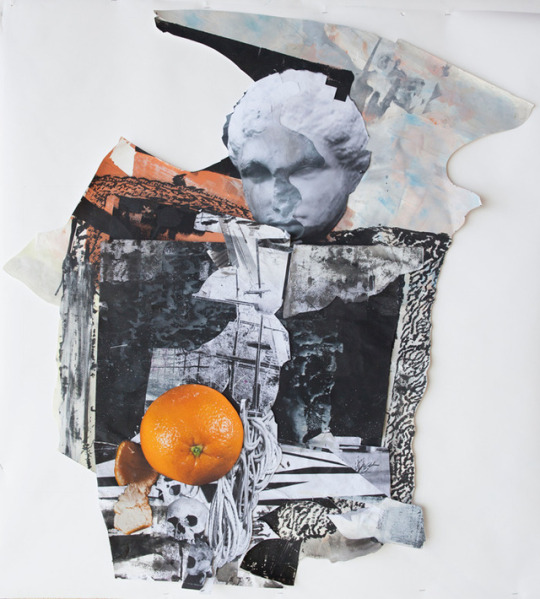
Kolaj Magazine is the world’s only internationally-oriented art magazine dedicated to contemporary collage. Subscribe, order a copy, or collect back issues HERE
COLLAGE ON VIEW
Now, as Before
Martin Golland at Galerie Antoine Ertaskiran in Montreal through 23 December 2017. Golland's paintings present a fictional meeting point between a built environment and the natural world, resulting in imaginary architectural spaces. Golland’s work is created from a broad range of painting techniques that respond to the contradicting history of representational painting. Using these subjects gives the artist a way to question the act of looking. This blurs the transition between imagination and reality, the bizarre and reverie. MORE
Are you getting Kolaj Magazine delivered to your door? Subscribe Today!
U.S. & International Subscribers go HERE | Canadian Subscribers go HERE
#collage#collageart#collageartist#visualart#contemporary art#cutandpaste#papercollage#analogcollage#collagecollectiveco#artmagazine#handmadecollage#collagist#collagista
13 notes
·
View notes
